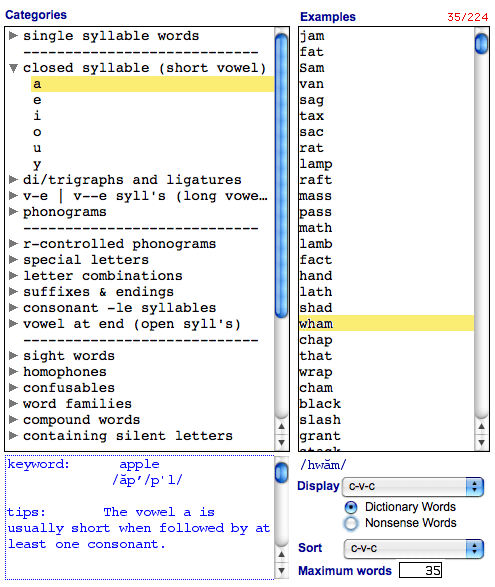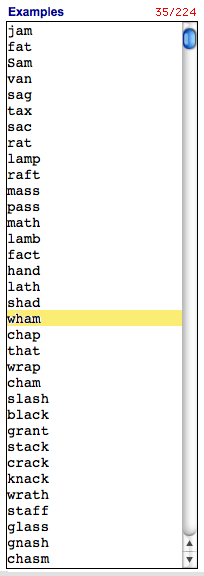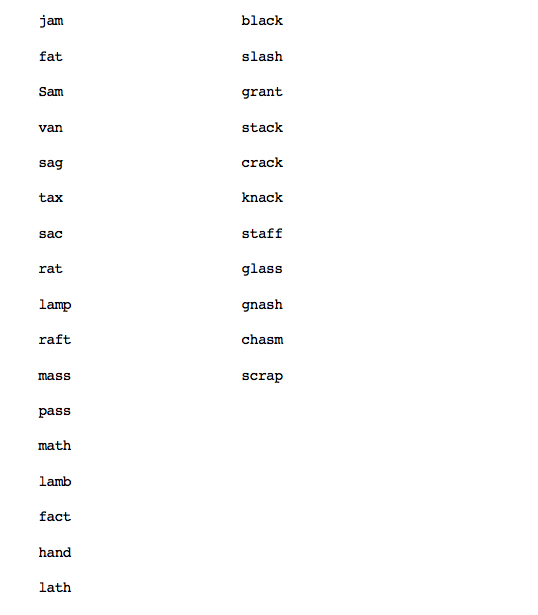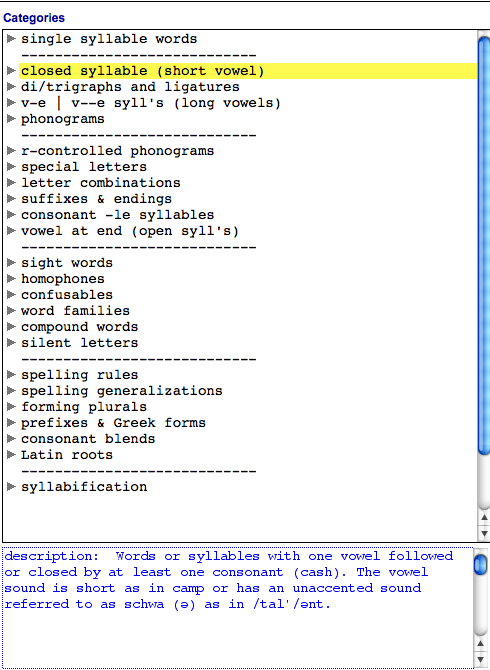WordSpring for early decoding instruction
With WordSpring you can create word lists for spelling, decoding, fluency training, and vocabulary development. WordSpring provides lists for all the concepts important in teaching decoding and spelling.
Here is an example of how you might use WordSpring in early decoding instruction to create c-v-c (consonant-vowel-consonant) and nonsense word lists.
| WordSpring screen | |
|---|---|
Start by opening WordSpring. Scroll down and select the closed syllable (short vowel) category. |
 |
| Closed syllable vowels in WordSpring | |
|---|---|
Double click on closed syllable (short vowel). You will see six vowels represented. Select a, the vowel introduced first in most reading programs. Since this is a beginning lesson, you will probably want only one-syllable words. Select “1 syllable” in the Display menu below “Examples”. A list of one -syllable words containing the short vowel a will now appear in the Examples window.
|
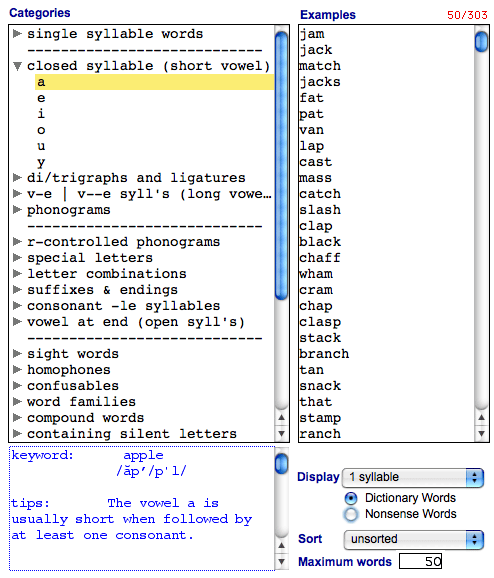 |
| Choosing c-v-c (consonant-vowel-consonant) words | |
|---|---|
You might want to make sure that the simplest words appear at the top of your list. To do this, go to the Sort menu below Display and change its setting to c-v-c (consonant-vowel-consonant. The Examples will now begin with the easiest c-v-c pattern (cat) and continue to more difficult patterns. |
|
| c-v-c short a words in Examples window | Buttons for moving words to Selections | c-v-c short a words selected | |
|---|---|---|---|
Now, move all the words to the User Selections window by double clicking on them or by clicking on the button with the two blue arrows between the windows. Remove words you don’t want to use in your lesson by dragging them out of the User Selections window. For example, if your students haven't learned wh and wr yet, you might want to remove wham, wrap, and wrath. |
|
|
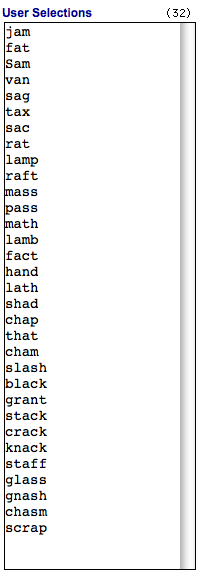 |
| Printed word list for use in class | |
|---|---|
Now you are ready to print your list for use with students. |
|
| Mixed list of short a words | |
|---|---|
Soon, you might want a similar list with the words in a mixed order. Simply change the Sort menu to unsorted. You now have a more varied list. Move it to User Selections as you did before and remove the words you do not want. |
|
| Short a nonsense word examples | Short a nonsense word selections | ||
|---|---|---|---|
If you find that your students are guessing too much, you might want to create a list of nonsense words that will force them to pay closer attention. Click on Nonsense words (between Display and Sort). Move the words that appear to User Selections. Delete any that you do not want to use. |
|
 |
| Large font printed word list for fluency training | |
|---|---|
If you want to use your list for fluency training, you may print it using a larger font with the words arranged horizontally (as shown). |
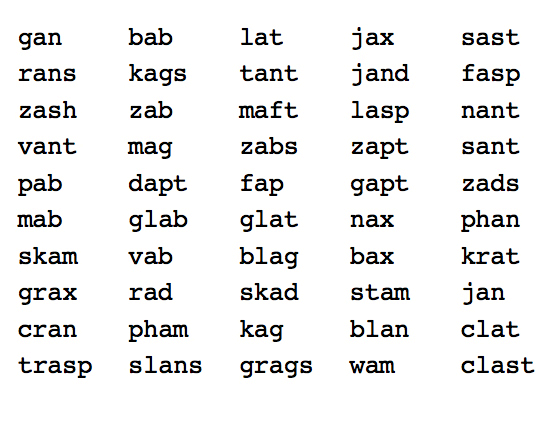 |
| Concepts included in WordSpring | |
|---|---|
|
As this window shows, WordSpring provides lists for all the concepts that are important in teaching decoding and spelling. With WordSpring you can easily create lists for all your lessons. |
|

